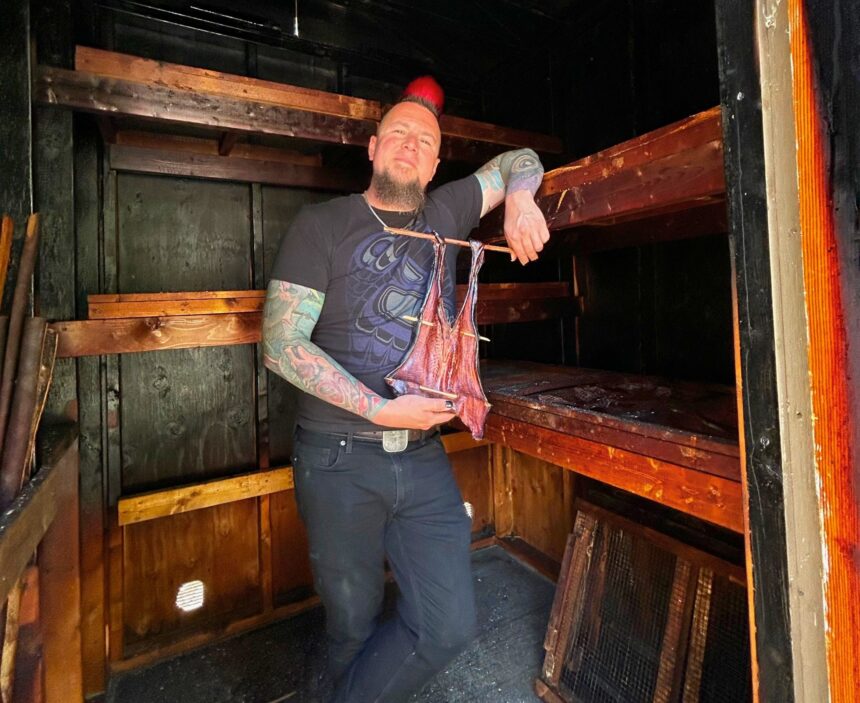From the fertile valleys of Vancouver Island to bustling urban centers, an Indigenous food revolution is quietly taking root across Canada. As more people reconnect with traditional foodways, the movement transcends mere culinary trends—it represents cultural resilience, sovereignty, and a path toward healing historical wounds.
Walking through the lush forests of the Cowichan Valley, Harold Joe points out plants that most hikers would overlook. “This is what sustained my ancestors,” he says, carefully harvesting stinging nettles. “These plants aren’t just food—they’re medicine, they’re teachers.”
Joe is part of a growing cohort of Indigenous food practitioners working to revitalize traditional food systems that colonial policies deliberately undermined for generations. The residential school system, the Indian Act, and various land management practices collectively disrupted the transmission of food knowledge between generations.
“When children were taken to residential schools, they weren’t learning how to identify plants, hunt, or preserve foods,” explains Tabitha Robin, Indigenous food researcher at the University of British Columbia. “This created a generational gap in knowledge that we’re now trying to bridge.”
The efforts to revive these traditions extend beyond cultural preservation—they address urgent health concerns. Indigenous communities face disproportionately high rates of diet-related illnesses, including diabetes and heart disease. Statistics Canada reports that First Nations adults are nearly twice as likely to experience food insecurity compared to non-Indigenous Canadians.
For Chef Shane Chartrand, member of the Enoch Cree Nation and author of “Tawâw: Progressive Indigenous Cuisine,” the connection between food and health is clear. “When we eat the foods that our bodies evolved with over thousands of years, we heal,” Chartrand told me during a recent culinary workshop in Edmonton. “Our communities face health challenges because we’ve been disconnected from our traditional diet.”
This reconnection has spawned innovative enterprises. In British Columbia, the Nuu-chah-nulth Seafood Development Corporation has revitalized traditional fishing practices while creating sustainable economic opportunities. Meanwhile, Three Sisters Manomin in Manitoba harvests wild rice using time-honored methods, creating jobs while protecting sensitive ecosystems.
The movement has found unexpected allies in the mainstream culinary world. Toronto’s Kukum Kitchen, Montreal’s Carte Blanche, and Vancouver’s Salmon n’ Bannock showcase Indigenous ingredients in contemporary settings, educating diners about Canada’s first cuisines.
“People are finally recognizing that Indigenous food systems represented sophisticated ecological understanding,” says Lenore Newman, Canada Research Chair in Food Security at the University of the Fraser Valley. “These weren’t primitive approaches—they were advanced systems balancing human needs with environmental sustainability.”
Federal policy is slowly catching up to this grassroots momentum. The 2019 revision of Canada’s Food Guide finally acknowledged the cultural importance of traditional Indigenous foods, while various grant programs now support community food initiatives on reserves and in urban Indigenous communities.
But significant barriers remain. Access to traditional hunting and harvesting territories continues to be restricted by industrial development, climate change threatens wild food sources, and regulatory frameworks often fail to accommodate Indigenous food practices.
“Our food sovereignty is deeply connected to land rights,” explains Dawn Morrison, founder of the Working Group on Indigenous Food Sovereignty. “We can’t fully revitalize our food systems without addressing larger questions about access to territory and self-determination.”
Despite these challenges, communities are finding creative solutions. In Nunavut, the Niqihaqut project combines traditional hunting knowledge with modern food safety protocols to distribute country food to elders and families in need. The initiative has become especially vital during pandemic-related food chain disruptions.
Educational institutions are also embracing this knowledge. Several colleges now offer Indigenous culinary programs, while land-based education initiatives teach youth traditional harvesting and preparation techniques.
The economic potential of these efforts shouldn’t be underestimated. Indigenous tourism centered around food experiences grew 23% between 2014 and 2019, according to the Indigenous Tourism Association of Canada, representing one of the fastest-growing sectors in Canadian tourism.
Beyond the economic metrics, these food revival efforts create something less tangible but perhaps more valuable—pride and cultural continuity. When youth learn to harvest and prepare foods their ancestors relied upon for millennia, it strengthens their connection to identity and place.
“When I teach young people about our traditional foods, I see something light up in them,” reflects Joe. “They stand taller. They feel connected to something larger than themselves.”
As Canada continues to grapple with reconciliation, food offers a uniquely powerful pathway. Unlike many aspects of colonial history, food traditions represent something positive to reclaim rather than trauma to process.
“Breaking bread together—or in our case, breaking bannock—creates space for understanding,” says Chartrand. “When people of different backgrounds share food and stories, barriers come down.”
This Indigenous food renaissance reminds all Canadians that the land we share contains ancient wisdom about sustainability and nourishment. In an era of industrial agriculture and climate uncertainty, these traditional approaches offer practical lessons about resilience.
For Harold Joe, watching the sunset over the Cowichan Valley after a day of harvesting, the future of Indigenous food looks promising. “Our knowledge never disappeared completely—it was just waiting for the right time to flourish again. That time is now.”






